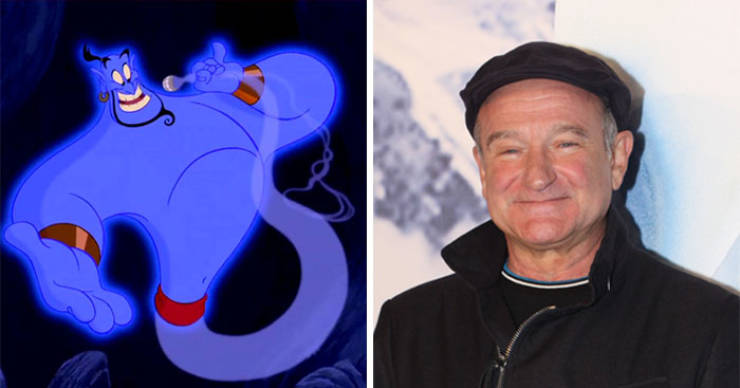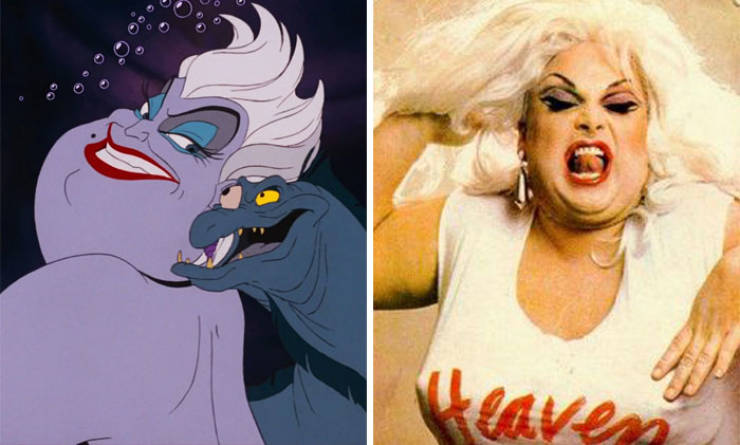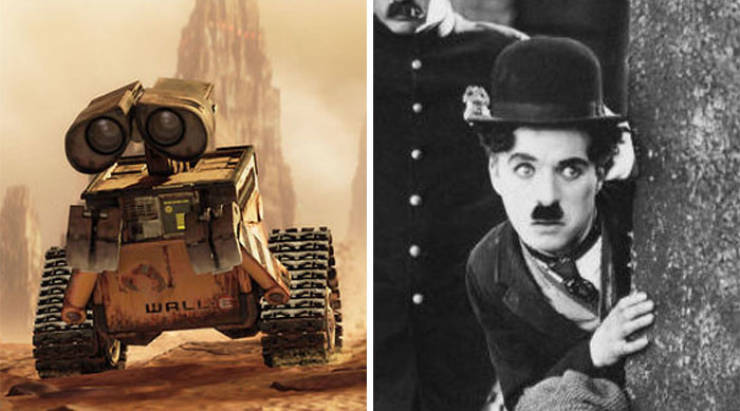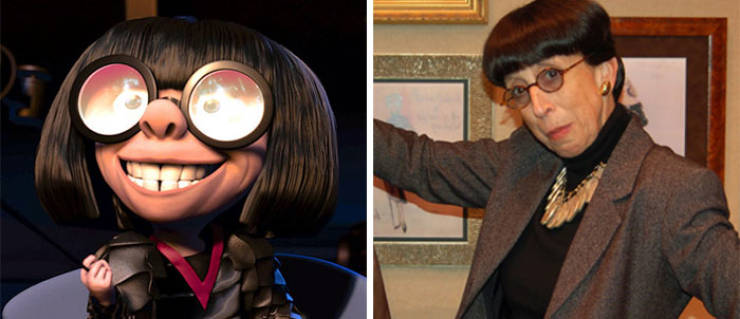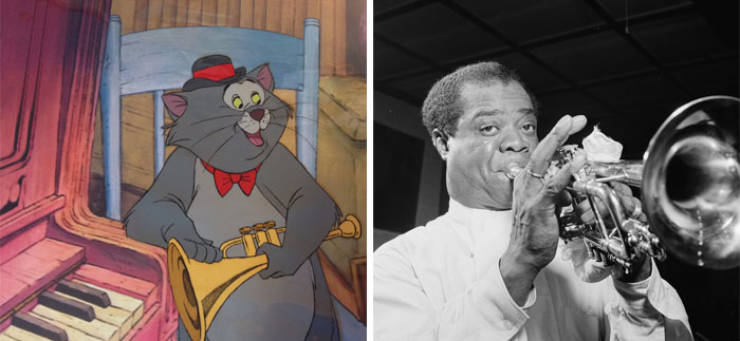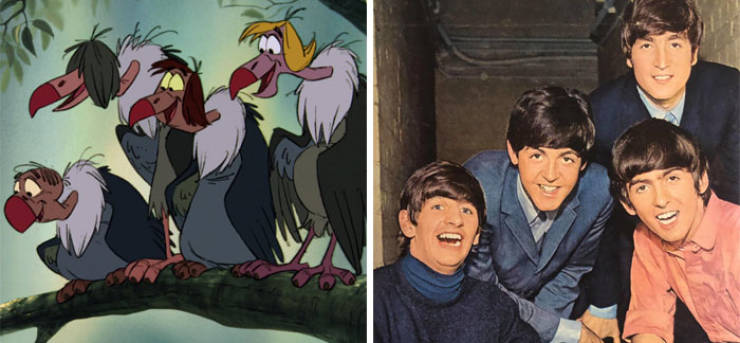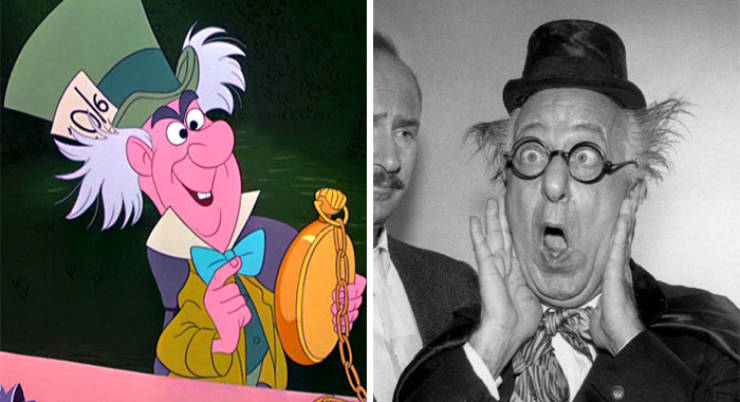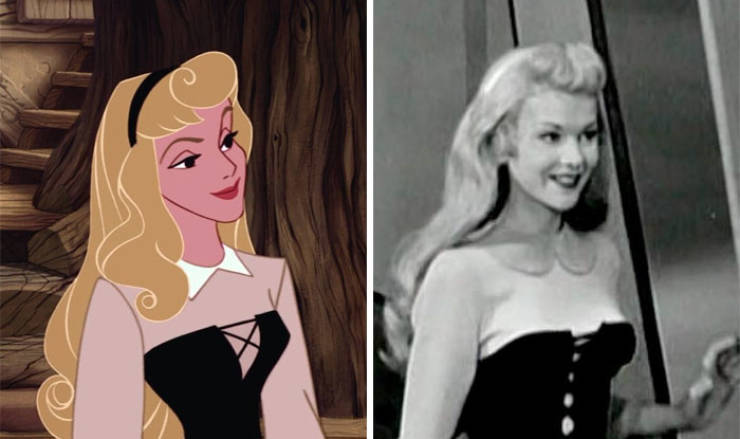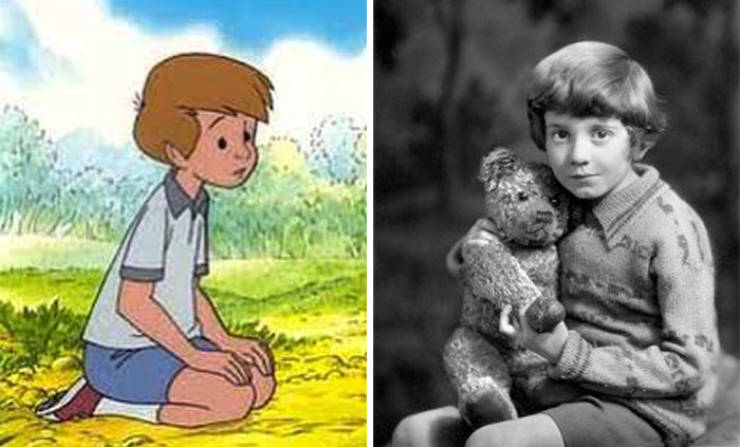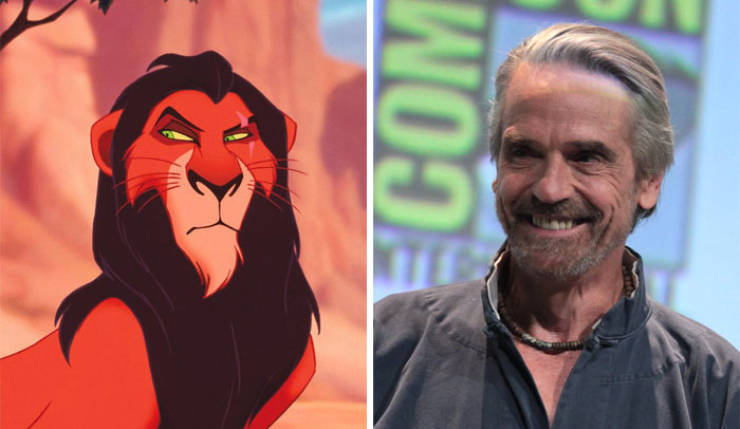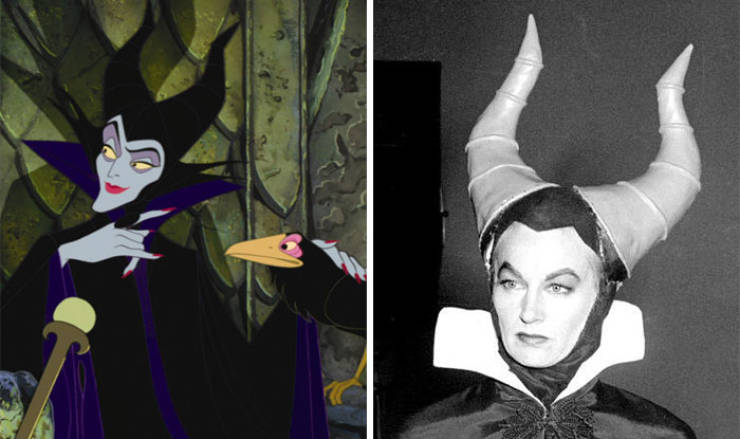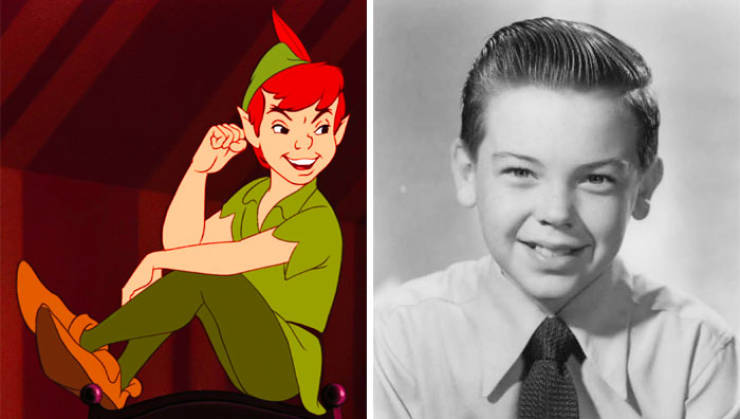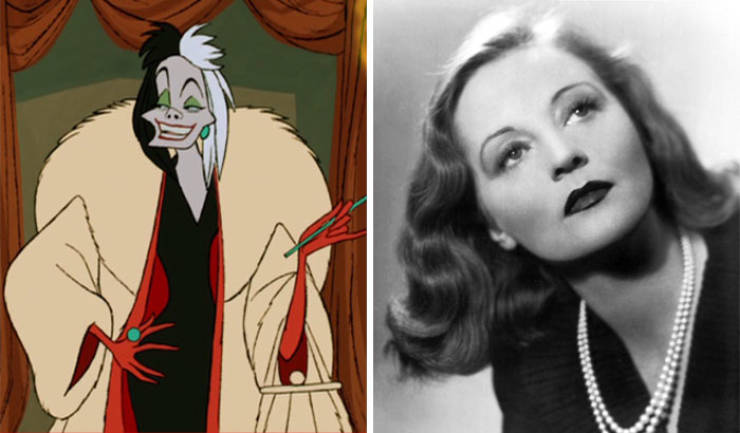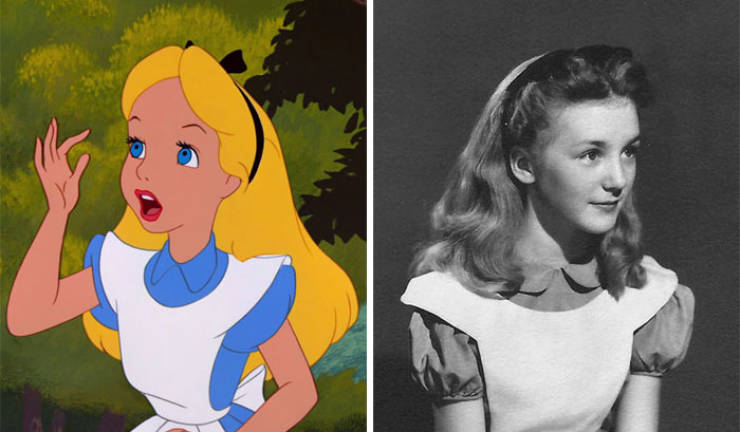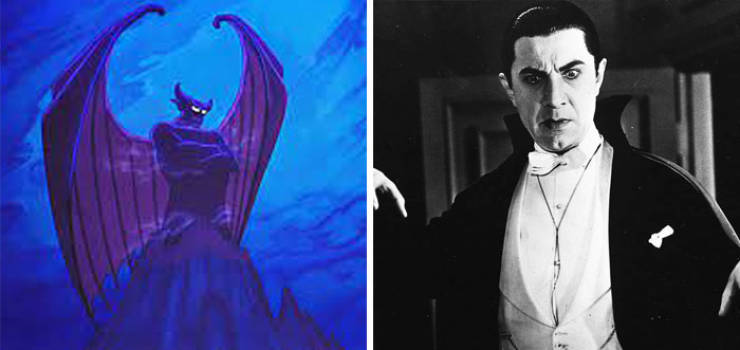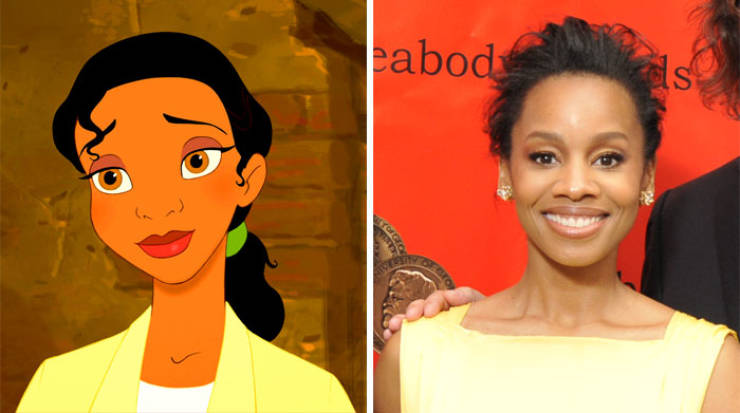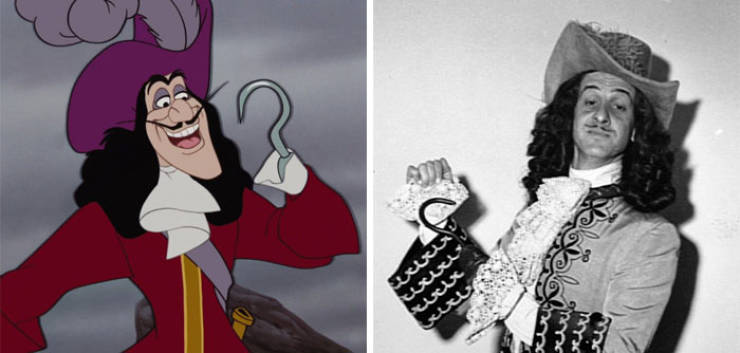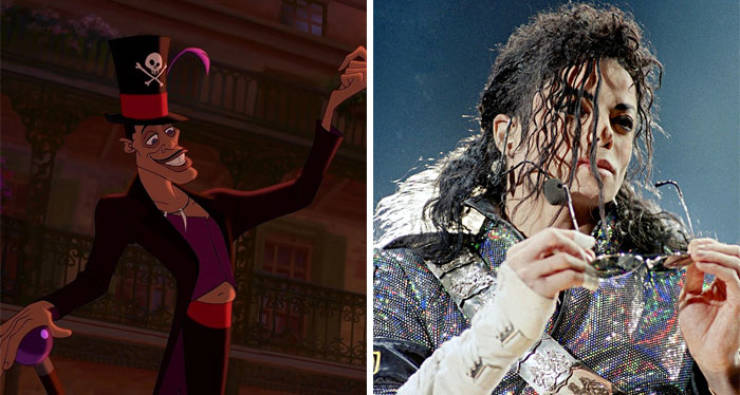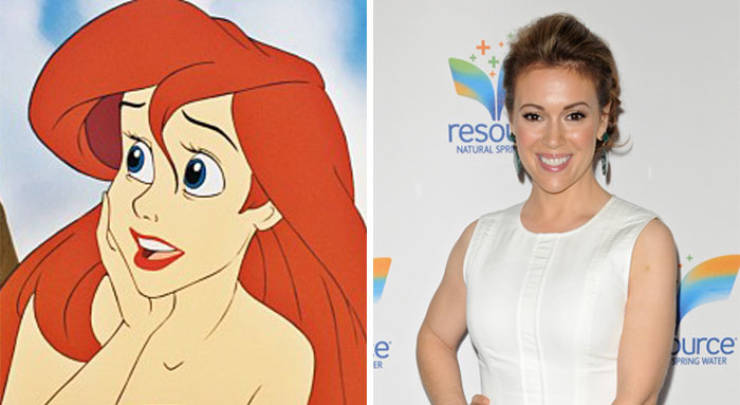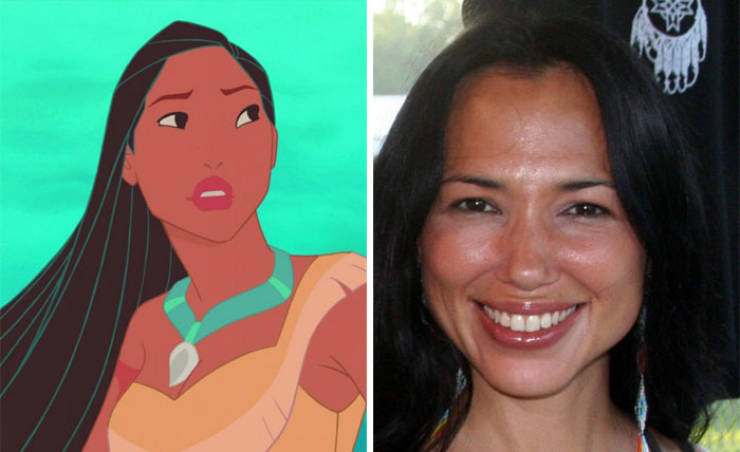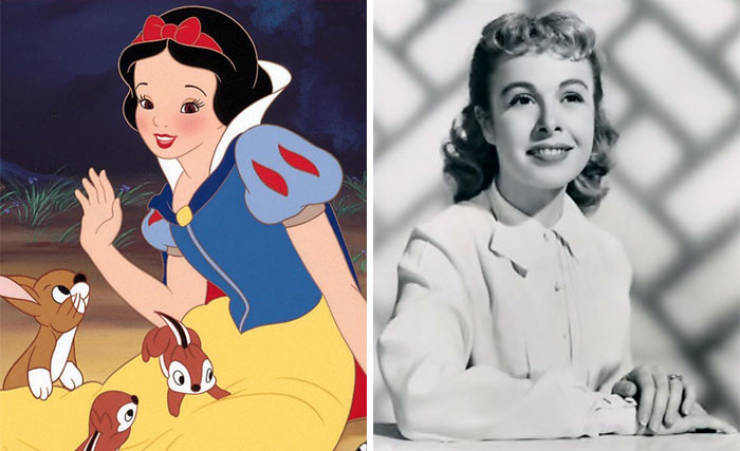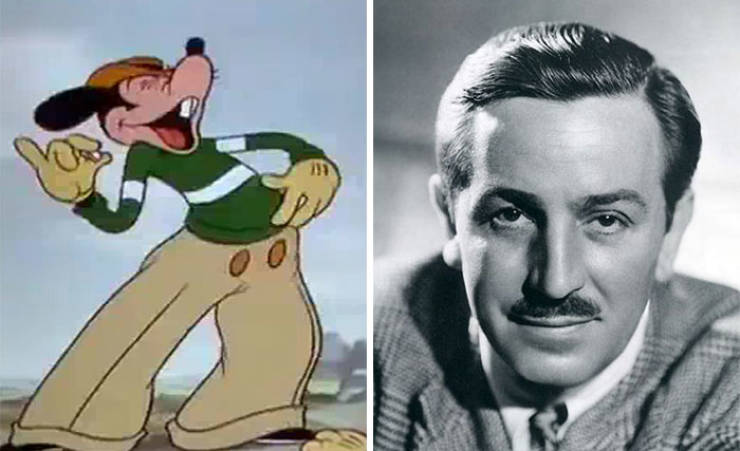The Genie In Aladdin Was Based On Robin Williams
The role of the Genie in the 1992 animated movie Aladdin was specifically created for Robin Williams because Disney wanted him to voice the character so much. What is more unusual about this character is that many of his lines were improvised. For some scenes he was given topics or dialogue suggestions but many dialogues were ad-libbed. So the Genie has a lot of Robin William’s personality and humour. Later the producers would just cherry pick the parts they liked the most to form the Genie’s character.
Ursula In The Little Mermaid Was Based On Drag Queen Divine
One of the most iconic Disney villains is Ursula from The Little Mermaid (1989). The character went through several changes, but at the end she took the form of an octopus and her looks was also inspired by American actor and drag queen Harris Glenn Milstead, also known as Divine.
Ursula has the actor's body type, her looks features the drag queen’s eye makeup, jewelry and mohawk which was an iconic part of the actor’s Pink Flamingos (1972) character Babs Johnson.
Wall-E In The Eponymous Movie Was Based On Charlie Chaplin
Wall-E is an animated movie produced by Pixar Animation Studios and released by Walt Disney Pictures in 2008. The main character is the robot WALL-E (Waste Allocation Load Lifter: Earth-Class).
WALL-E didn’t talk so the filmmakers couldn’t rely on dialogue to convey emotion and transmit a story. That is why the film's story crew and animation crew watched a Keaton and a Charlie Chaplin film every day for almost a year to study how to present a story just by facial expressions.
Edna Mode In The Incredibles Was Most Likely Based On Edith Head
Edna Mode looks very similar to the actress Linda Hunt: they both are quite short, have similar facial features and the same hairstyle. However, the character’s personality would suggest that more likely costume designer Edith Head was the inspiration for Edna.
And the appearance is not that far off either. They both have a similar bob cut and the signature round glasses. Among Head’s famous quotes are "Some people need sequins, others don't" and "Your dresses should be tight enough to show you're a woman and loose enough to show you're a lady” which wouldn’t sound too uncharacteristic.
And although The Incredibles director Brad Bird hasn't confirmed the fact, many say that Edith Head is the best guess.
Scat Cat In The Aristocats Was Based On Louis Armstrong
Aristocats is an animated movie released in 1970 and one of its characters was a trumpet laying cat. It was created for and based on Louis Armstrong and was originally named Satchmo Cat. The cat had a gap in between his front teeth like Arnstrong had and the way he played his instrument was modeled after the musician.
Unfortunately, Armstrong couldn’t do the job because of his health and he was replaced with the musician Scatman Crothers. That is why we now know the jazz band leader as Scat Cat.
The 4 Vultures In The Jungle Book Were Based On The Beatles
The animated film Jungle Book was released in 1967 and in that year The Beatles were extremely popular, so much so that the production team working on the film created the 4 vultures with their signature mop-top haircuts. The creators of the film were hoping that the band would also voice the characters and sing their song, "That's What Friends Are For".
Sadly, this plan was never executed as John Lennon didn’t want to participate. He even suggested that it’s a better idea to hire Elvis Presley. At the end, the vultures were voiced by J. Pat O’Malley, Digby Wolfe, Lord Tim Hudson, and Chad Stuart and had a Liverpool accent.
The Mad Hatter In Alice In Wonderland Was Based On Ed Wynn
Alice In Wonderland is an animated film released in 1951 and one of the most memorable characters is the Mad Hatter. In that animated movie it was voiced by actor and comedian Ed Wynn. The character that we see in the cartoon not only has the actor’s voice but also reflects his personality, gestures and resembles him in appearance.
Princess Aurora In The Sleeping Beauty Was Based On Helene Stanley
The Sleeping Beauty is a 1959 Disney’s animated movie that is based on Charles Perrault's fairy tale of the same name. The main character is Aurora and Disney actually struggled to find a voice actress that suited the character. Weirdly enough, there was put so much effort into perfecting the voice and the accent for the singer Mary Costa only to have 18 lines of dialogue and the least amount of screen time of all speaking main characters in full-length Disney movies.
The appearance of Aurora was partially based on Audrey Hepburn, as a matter of fact, it was her slender figure and tiny waist that inspired Aurora’s physique. But she got her facial features, dance moves, elegance and grace from her live-action model Helene Stanley.
Jessica Rabbit In Who Framed Roger Rabbit Was Mostly Based On Rita Hayworth
Jessica Rabbit was a character in the 1988 live-action/animated comedy Who Framed Roger Rabbit. The animation director Richard Williams explained, “I tried to make her like Rita Hayworth; we took her hair from Veronica Lake, and Zemeckis kept saying, 'What about the look Lauren Bacall had?’" He also added that the character was supposed to be the "ultimate male fantasy, drawn by a cartoonist."
Christopher Robin In Winnie The Pooh Was Based On Christopher Robin Milne
Winnie the Pooh is a media franchise that first came out in 1966 with the theatrical release of the short Winnie the Pooh and the Honey Tree. The story is based on Alan Alexander Milne’s books about the yellow bear. The owner of the bear is Christopher Robin, which the author based on his son Christopher Robin Milne.
Scar In Lion King Was Based On Jeremy Irons
Lion King was released in 1994 and it won peopleàs hearts becoming the highest-grossing animated film of all time, holding this position until 2003 when the computer-animated movie Finding Nemo came out. Lion king was also the highest-grossing film of Walt Disney Animation Studios, and the highest-grossing film of 1994.
The villain in the movie, a lion named Scar, was based on the character voice actor Jeremy Irons. Initially the actor refused the role as he didn’t feel comfortable transitioning from his previous dramatic role to a comedic one. But eventually he agreed and the animator Andreas Deja actually went and watched the previous movie in which Irons acted, Reversal of Fortune (1990) to observe his acting and incorporated many of Irons's facial traits and tics.
Maleficent In The Sleeping Beauty Was Based On Eleanor Audley
Disney’s animated film showing the story of Charles Perrault’s fairy tale Sleeping Beauty was released in 1959. The main villain, Maleficent, was voiced by the American actress Eleanor Audley. But she was also an inspiration to her looks. Animators Frank Thomas and Marc Davis observed Audley’s facial features, expressions and gestures to design the character.
Eleanor Audley also voiced Cinderella’s evil stepmother in the 1950 animated film Cinderella. That time the film creators modelled the character based on the actress too.
Peter Pan In The Eponymous Movie Was Based On Bobby Driscoll
The 1953 animated film’s Peter Pan main character who never grows up was based on the voice actor Bobby Driscoll. He was mostly a live-action model for the close ups and Walt disney actually complained that the animators relied on his facial expressions too much, making Peter Pan’s face “too masculine, too old.” The actor was 16 years old at that time.
Cruella De Vil In One Hundred And One Dalmatians Was Based On Tallulah Bankhead
A Hundred And One Dalmatians is an animated film based on the 1956 novel The Hundred and One Dalmatians by Dodie Smith and was released in 1961. The villain of the movie is Cruella de Vil and she was voiced by Betty Lou Gerson. Animator Marc Davis added her cheekbones to the character's looks but mostly Cruella was based on actress Tallulah Bankhead.
The actress was considered to be “unsuitable for the public” and earned a high spot in Will Hays’s famous Doom Book which is kind of a blacklist of actors. That made her a perfect inspiration for the mean, rude, loud, greedy and selfish woman that Cruella de Vil was.
Alice In Alice In Wonderland Was Based On Kathryn Beaumont
The main character of the animated film Alice In Wonderland (1951) was based on a real 10-year-old girl Kathryn Beaumont. First she appeared in the 1948 film On An Island With You and after that she was the model for Alice. She helped the animators by acting out scenes from the cartoon to make the animation look more realistic. Also, the iconic scene of Alice falling down the rabbit hole was inspired by a jump of a stool.
Chernabog In Fantasia Was Based On Bela Lugosi
A lesser talked about Disney animated movie is Fantasia, released in 1940, although it received positive critical response. One of the characters is a nocturnal devil based on a deity from slavic mythology. It’s name is Chernabog that can be translated as “black god.” To draw the character a real-life model was used and it was Bela Lugosi, the actor who portrayed Count Dracula in the 1931 film. Even though director Bill Tytla didn’t like Lugosi’s performance, but it can be denied that the close ups still bear a resemblance to the actor.
Tiana In The Princess And The Frog Was Based On Anika Noni Rose
The Princess and The Frog (2009) was the first Disney animated movie to feature an African-American princess and the story is loosely based on the German folk tale The Frog Prince as collected by the Brothers Grimm.
The lead character, Tiana, was based on Anika Noni Rose, the actress who lent her voice to the princess. When Rose first saw a video of Tiana’s design, this was her reaction, “I had no idea that Tiana was going to look as much like me as she did and I was mind blown. I had no words."
Captain Hook In Peter Pan Was Based On Hans Conried
Disney’s 1953 animated movie Peter Pan was based on a 1904 play Peter Pan, or The Boy Who Wouldn't Grow Up by J. M. Barrie. The villain of the movie was a pirate named Captain Hook and is another case of a voice actor being the model for the character. He was working as a live-action reference for two years and oftentimes he was in full costume because the animators not only observed the facial expressions and body language but also how the fabric of the clothes moved.
Dr. Facilier In The Princess And The Frog Was Mainly Based On Michael Jackson
Dr. Facilier, the villain in the animated movie The Princess and the Frog (2009), is a mixture of several celebrities. Dr. Facilier got some of his moves from the legendary jazz singer Cab Calloway and got his appearance from Baron Samedi, the master of the dead, who is often depicted as a skeleton or a black man who has his face painted with a skull. He wears a top hat, black tailcoat, dark glasses, and cotton plugs in the nostrils. That is how corpses are dressed for burial in the Haitian style. So Dr. Facilier has a lot of these characteristics.
But the biggest influence when creating this character was Michael Jackson. It is especially seen when the villain is performing his songs. Jackson’s dance moves seemed simple and effortless but in reality required a lot of work and talent but Disney animators managed to show it off on screen.
Ariel In The Little Mermaid Was Based On Alyssa Milano
The protagonist of the animated movie The Little Mermaid (1989), Ariel, was designed to resemble actress Alyssa Milano. Strangely enough, the actress didn’t know what the movie creators were doing. She only found out about it when the producers released a documentary of the behind the scenes of making the film.
The producers used her teen photos as reference and recreated her face structure and petite frame, although they chose a different hair color.
Pocahontas In The Homonymous Movie Was Based On Irene Bedard
Disney’s animated film Pocahontas (1995) is actually based on a real story of the real-life Powhatan woman Pocahontas when the English colonial settlers came to North America. The inspiration for the female protagonist’s appearance was her voice actress Irene Bedard who has played mostly lead Native American roles in several movies.
There was another live-action model for the character, a Filipina college student, Dyna Taylor. She was not credited and in fact she considered suing Disney for it, but didn’t go through with it as her lawyer advised not to. Animator Glen Keane told The New York Times that Taylor didn’t have that much influence on how the character looked and didn’t think her contribution was worthy of a screen credit.
Snow White In Snow White And The Seven Dwarfs Was Based On Marge Champion
Snow White and the Seven dwarfs is the first Disney animated feature film released in 1937 and Snow White is the first Disney Princess. The movie creator were searching for a girl that would act out scenes so that would help them to make the animation more realistic and that role was given to a well-known dancer at the time Marge Champion who was only 14 years old.
She was supposed to maintain her dancer’s elegance and also, she was brought up in a royal-like family, so it was all that the creators wanted reflected in the first Disney Princess.
Aladdin In The Eponymous Movie Was Based On Tom Cruise
Disney’s animated movie Aladdin was released in 1992 and originally the main character was supposed to be designed taking actor Michael J. Fox as a reference. Aladdin was mean to be thirteen but later in the production the creators wanted a more mature character and then Michael J. Fox was decided to be too boyish.
Then Tom Cruise was chosen. And specifically his character from Top Gun, as suggested by the then-chairman of Walt Disney Studios, Jeffrey Katzenberg.
Mortimer Mouse In Mickey Mouse Is Thought To Be Based On Walt Disney
Mortimer Mouse first appeared in Disney’s comic strips as a rival for Mickey, both striving for Minnie’s affections. In 1936 he appeared in a short film called Mickey’s Rival.
There is no official confirmation, just a legend that says that it was Walt Disney himself who was the base for the character’s design. It is said that one of the animators drew a caricature of Disney and he liked it so much that introduced him as a new character. The clues that lead people to believe the legend are Mortimer’s slim and tall figure, thin moustache and the fact that Disney originally wanted Mickey Mouse to have Mortimer’s name.

